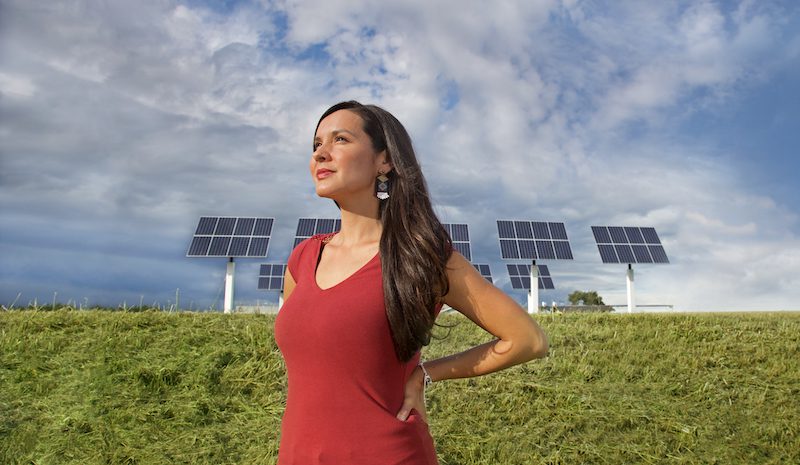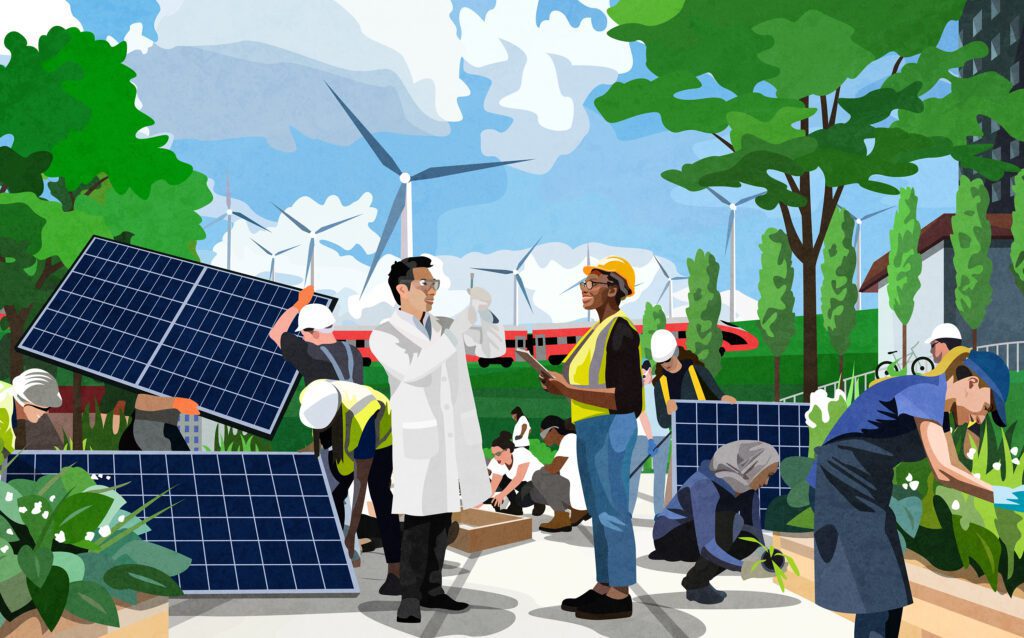Last fall, Ontario announced the creation of a $325 million Green Investment Fund (GIF), which would fight climate change and create jobs. It was billed as a down payment on cap-and-trade revenue, which will eventually net the province nearly $2 billion each year to invest in climate action.
Starting in December and detailed in February’s budget, money from Ontario’s GIF has been allocated to initiatives that will cut carbon pollution while strengthening the economy. These initiatives include electric vehicle public charging stations, home energy retrofits, low-carbon technology for business, and more.
The GIF investments are a step in the right direction. They can help Ontario meet its climate targets while generating jobs, reducing costs for Ontario residents and businesses, and cleaning the air. And they’re good examples of the types of things Ontario can and should fund with cap-and-trade proceeds, which are expected to be about $478 million in fiscal 2016/17 and $1.9 billion the year after.
The new Climate Change Mitigation and Low-carbon Economy Act is intended to ensure cap-and-trade revenue will be used to further cut carbon pollution and build a low-carbon economy. Some of the Act’s provisions around transparency and accountability need strengthening to ensure that we’re getting the best economic and environmental value, and there’s still time for that.
Ontario will soon release the details of its climate action plan, which will spell out the initiatives the province intends to support to cut carbon emissions in each of the key polluting sectors that will be covered by the cap-and-trade program—transportation, buildings, electricity and industry. It’s useful to take a closer look at what the GIF currently funds and how to improve it when cap-and-trade dollars start flowing.
Electric Vehicle Public Charging Stations
With about a third of Ontario’s carbon pollution coming from transportation, getting more people out of gas-guzzlers and into electric cars is a big part of the solution. A network of public fast-charging electric vehicle (EV) stations, if properly located and designed, can reduce drivers’ anxieties about running on empty and make it free or very cheap to charge an electric car instead of paying money at the gas pump.
The GIF kicks off the province’s move away from gas engines, with an initial $20 million for public charging stations. This is a good start, but cap-and-trade revenue can further reduce reliance on gas-guzzling cars by building more public charging stations that make it easier and more convenient to charge EVs.
Incentives for Electric Vehicles
The revamped electric vehicle incentive program makes Ontario the most attractive place to buy an electric car in North America. In Ontario, EVs are eligible for up to $13,000 in rebates, plus an additional $1,000 for vehicles with five seats or more, and up to $1,000 for home charging stations. Better yet, the program is designed for EVs that are affordable, with the incentive capped at $3,000 for vehicles over $75,000. With declining prices and low maintenance and fuelling costs, EVs are now a more attractive choice for Ontario drivers.
Home Energy Audits and Retrofits
With nearly one-fifth of Ontario’s emissions coming from buildings, home energy retrofits can cut emissions while saving Ontario residents money to heat and cool their homes. The GIF’s $100 million investment in home energy audits and retrofits will help homeowners identify ways to save energy and pay for retrofits, while increasing local jobs upgrading furnaces, water heaters and insulation. This round of funding will partner with Enbridge and Union Gas. This investment in home energy efficiency is on the money, but the permanent program should be administered and overseen by experienced government agencies instead of gas utilities with an interest in just one source of energy.
Energy Retrofits for Social Housing
Climate action should have economic, social and health benefits. Ontario has announced a $92 million GIF investment in energy retrofits for social housing, including $10 million for rural and aboriginal communities. Energy efficiency improvements for social housing will reduce emissions while improving comfort and cutting energy bills for residents. Ontario should ramp this program up, as many social housing buildings were built decades ago, have old inefficient appliances, and have fallen into disrepair.
Empowering First Nations to take climate action
Remote First Nations are particularly vulnerable to the impacts of climate change and often dependent on costly and emissions-intensive diesel fuel to power their communities. That’s why the GIF’s $13 million for First Nations communities to improve energy independence and climate resilience is critical. Programs like this can be improved by offering training and employment opportunities to people who face barriers to employment. The pioneering work of the Toronto Community Benefits Network is a good model that should be applied more broadly.
Low-carbon technology for Industry
Ontario won’t be able to achieve its climate targets without encouraging low-carbon industrial activity. Just like the GIF will help save homeowners and communities money on energy bills, it will also help businesses adopt low-carbon technologies to cut costs and carbon pollution. In partnership with the Ontario Centres of Excellence, the GIF invests $74 million to help large industrial facilities adopt clean technology solutions to reduce emissions. It also commits $25 million to energy efficiency programs for small and medium-sized businesses. This will assist existing industries in the low-carbon transition and support the development, demonstration and deployment of made-in-Ontario clean tech innovations. It is important that the government evaluate projects to ensure support goes to those that have prohibitive up-front financing costs rather than projects that would be cost-effective without cap-and-trade dollars.
The GIF shows Ontario is ready to invest cap-and-trade money in programs that further cut carbon pollution. It’s encouraging to see the government’s commitment to enshrine this in law with the Climate Change Mitigation and Low Carbon Economy Act. The Act establishes a Greenhouse Gas Reduction Account for cap-and-trade proceeds, requires the province to report on potential reduction in greenhouse gas resulting from an action, and a cost-per-tonne assessment of the reduction.
These are positive developments. The GIF is a strong down payment on carbon reduction programs. Let’s make sure Ontario makes cap-and-trade revenue a permanent fund for climate action.
You can help. Take action here.







